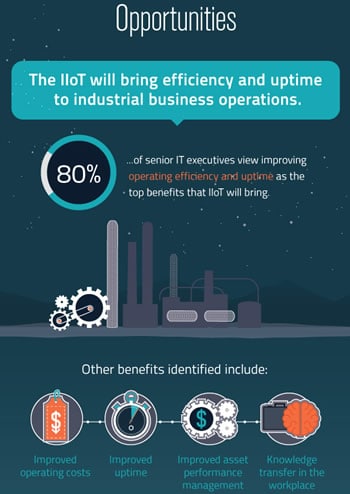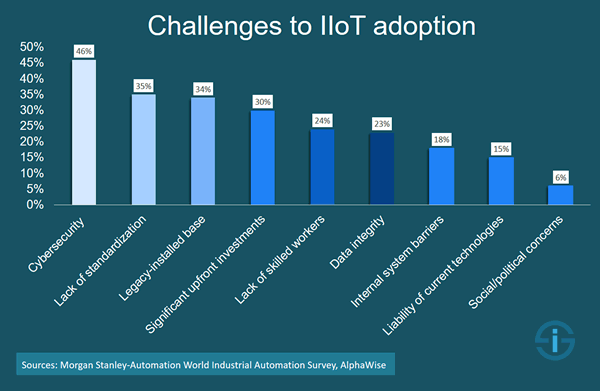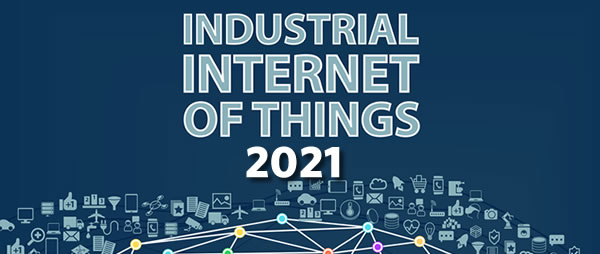The Industrial Internet of Things market (let’s simply say the Internet of Things without the Consumer Internet of Things part) is growing fast as digital transformation in many industries is accelerating in an Industry 4.0 reality.
With strong alliances between leading Industrial Internet of Things (IIoT) players, proven IIoT applications (and use cases) that inspire companies across several industries and a clear focus on the improvement of operational efficiency, the IIoT market is expected to grow with a double-digit compound annual growth rate (CAGR) until at least 2021.
Focus on manufacturing and Industry 4.0
Manufacturing is a major segment of the Industrial Internet of Things market.
According to data from Dell, the benefits reported by manufacturing executives who deployed Industrial Internet of Things applications are clear:
- 53 percent of manufacturing executives utilizing IIoT reported an improvement in business innovation.
- 50 percent of manufacturing leaders increased their competitive edge.
- 50 percent also says to have reduced total cost of ownership (TCO).
It isn’t too late to attach intelligent IoT gateways to existing industrial assets in the combination of IT and OT, what the IIoT is about, and let them become key providers of insights using IIoT data and analytics, Dell says.
And of course, the other way around, these insights can be used to innovate and optimize what you do with those assets, even if they weren’t designed to gather data. In the end, Caterpillar, the often mentioned success case in the Industrial Internet of Things was relatively late as well and just look where they are now.
The manufacturing segment is the largest segment in the Industrial Internet of Things market and Industry 4.0 is seen as the main enabler of this big increase.
The major growth segments in the Industrial Internet of Things market until 2021
Back to the overall Industrial Internet of Things market. According to research by IndustryARC, released end June 2016, the Industrial Internet of Things market is poised to grow to a whopping $123.89 Billion by 2021. That’s a big chunk of the Internet of Things market overall.

We mentioned the manufacturing industry earlier for a reason as it will be the Industrial Internet of Things market segment that will be generating the highest revenue in the forecast period and for IndustryARC Industry 4.0 is key in it.
The highest growth rate nevertheless is for another industry: the healthcare or medical devices IIoT segment which is expected to grow at a CAGR of 59.8 percent.
Next come utilities, more specifically the energy sector, with amongst others smart grid penetration and an expected CAGR of 39.7 percent.
Looking at the data from a regional perspective, the European region was the leader in the IIoT market in 2015 (there is enormous focus on Industry 4.0 in Europe) and the market is further expected to grow at a CAGR of 22.2 percent until 2021. Among the driving industry segments in Europe are manufacturing and energy but also transport.
The Industrial Internet of Things market is booming but challenges remain
While the Internet of Things in many areas still needs a lot of work and catching up (certainly in the Consumer Internet of Things space), the Industrial Internet of Things is clearly here and the next few years will lead to big investments and many mature projects in the intersection of IT, OT, processes, people and Industry 4.0.

This of course doesn’t mean that there aren’t challenges to tackle in IIoT as well. The previously mentioned data from Dell show that, while 33 percent of manufacturers who use IIoT report improved asset utilization, 49 percent achieved improved process performance and 36 percent reported lower machine and asset downtime, there are three key barriers blocking the adoption of the Industrial Internet of Things:
The three main challenges regarding IIoT adoption – according to Dell.
- Resource constraints rank first with 48 percent reporting budgetary constraints.
- Security comes second (and it is of course THE topic since the end of the Summer of 2016 as you know), with 34 percent reporting security and compliance concerns.
- Last but not least comes uncertain ROI with 27 percent reporting unclear financial benefits and difficulty calculating ROI.
More information about the research by IndustryARC here.
Top image: Shutterstock – Copyright: a-image – All other images are the property of their respective mentioned owners.


